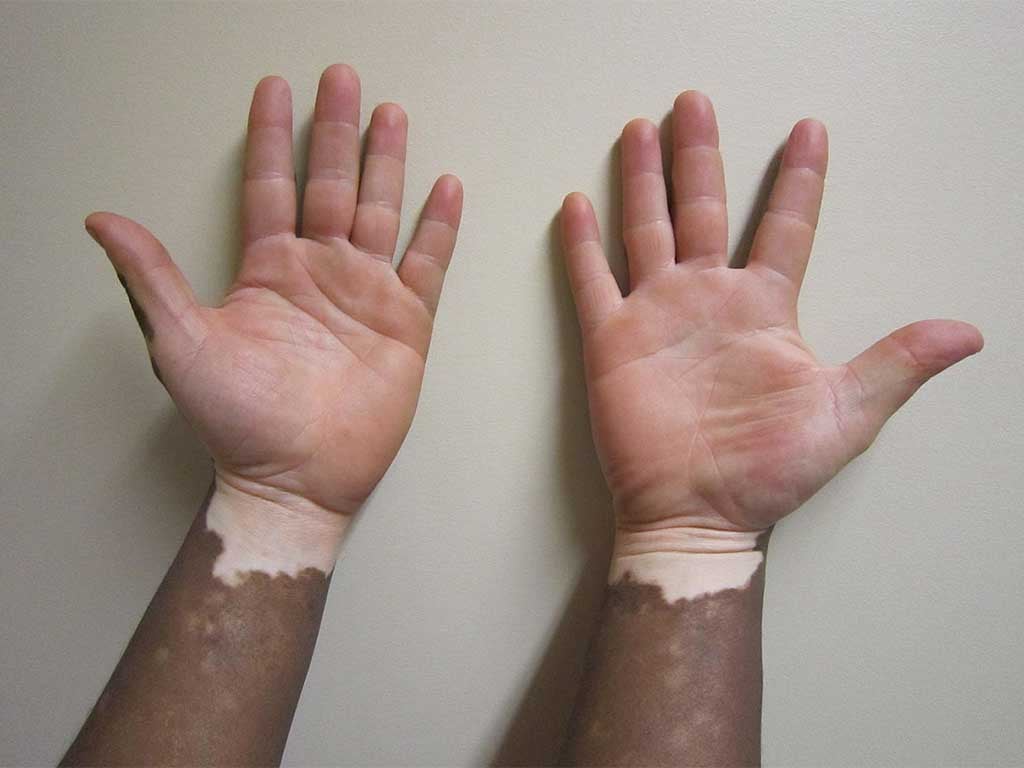Living with vitiligo: so what if our skin looks a little different?
There is very little awareness about the condition, which affects one in 100 people worldwide

Your support helps us to tell the story
From reproductive rights to climate change to Big Tech, The Independent is on the ground when the story is developing. Whether it's investigating the financials of Elon Musk's pro-Trump PAC or producing our latest documentary, 'The A Word', which shines a light on the American women fighting for reproductive rights, we know how important it is to parse out the facts from the messaging.
At such a critical moment in US history, we need reporters on the ground. Your donation allows us to keep sending journalists to speak to both sides of the story.
The Independent is trusted by Americans across the entire political spectrum. And unlike many other quality news outlets, we choose not to lock Americans out of our reporting and analysis with paywalls. We believe quality journalism should be available to everyone, paid for by those who can afford it.
Your support makes all the difference.Growing up she was called names like zebra, cow or penguin.
Natalie Ambersley, 31, from Enfield grew up with vitiligo. Currently white patches cover about 75 per cent of Natalie’s face and body.
The condition affects one in 100 people worldwide. It's caused by the loss of skin pigment called melanin, which leads to the appearance of white patches on the skin.
She told London Live how people "often look at my hands and my face and then wonder why my hands are white and my face is mixed race."
“As much as I hate saying that I am different, I am a little bit different,” she said. “It affects me on a day-to-day basis. It’s something I see in the mirror everyday.”
“Growing up, there was the odd occasion when kids might be a little spiteful and call me names like zebra, cow or penguin – anything that looks black and white,” she added.
According to the Vitiligo Society, the cause can be genetic but stress, sunburn or a cut can also trigger the condition.

Natalie says there is very little awareness about vitiligo but the likes of supermodel Chantelle Brown-Young, who was recently chosen as a contestant for television show, America’s Next Top Model, has helped to highlight the condition.
“It’s only in recent years that people like her can do things like this,” she said. “What she’s doing is amazing for people like me who suffer from vitiligo. I’m quite shy about my vitiligo.
“I want people to recognise that even though we have vitiligo and we are a bit different, we can still be beautiful and it’s not all about what’s on the outside.
“There is still a long way to go before people can see past vitiligo but with people like Chantelle, it can be more recognised. I hope people will be able to see past the white patches that she has and see her for who she is.
“She’s someone that inspires me and makes me think that I am just a normal person even though I do look a little different to everybody else.”
In the past, Natalie used bleaching creams on her skin in an attempt to even out her white patches. Sometimes they burned her skin. She's stopped now, but skin bleaching is a lucrative market and is very common in the black and Asian communities. It’s the process of whitening the skin, using body creams and soaps, most of which contain dangerous and banned chemicals such as mercury and hydroquinone.
Natalie will be on London Live’s lunchtime show, Headline London, on Tuesday, August 5, at 12:30pm
Follow Vanessa on Twitter @VanessaBaffoe
Join our commenting forum
Join thought-provoking conversations, follow other Independent readers and see their replies
Comments